READ: Laboratory Safety
| Site: | Mountain Heights Academy OER |
| Course: | Medical Forensics Q1 |
| Book: | READ: Laboratory Safety |
| Printed by: | Guest user |
| Date: | Sunday, 27 July 2025, 5:06 PM |
Laboratory Safety
In the lab there are many safety precautions that must be taken. Depending on the work being done in the lab, the specific safety precautions may vary, but there are general rules and equipment that help ensure your safety, as well as those around you. In a forensics lab keeping the evidence uncontaminated is also a priority. Safety equipment is meant to protect workers in the lab, but it also helps keep evidence from becoming contaminated.

Personal Safety
There are some general types of equipment that are used in all labs to protect workers from various hazards. Some of the hazards that are common in laboratories include flames, chemicals, fumes, biological hazards, spills, and other common injuries such as cuts and falls. Personal protective equipment helps protect you, and those working around you. Many labs have required safety protocols that they must follow.
Personal Safety Equipment
Eyewear
When working in a lab, it is usually necessary to wear protective eyewear. Eyewear can consist of goggles or safety glasses. Regular eyeglasses or contact lenses are not enough to provide protection. Goggles or safety glasses can be worn over regular glasses. Goggles are usually completely sealed so they protect the eyes from splashes or particles in all directions. Goggles usually have small vents that allow for airflow so the goggles don’t become fogged. Safety glasses aren’t sealed around the face, so they are not as protective on the sides, top, or bottom, but they are sufficient for some uses. Some safety glasses are also made to protect the eyes against certain types of light that may be used in different lab procedures. It is good practice to always wear safety glasses or goggles while in the lab, even if you are not working on something that requires them directly. This is because others in the lab may be working with substances that could potentially get in your eyes if an accident occurs.

Lab coats and aprons
Lab coats or aprons are also necessary while working in the lab. Basic white lab coats are typically worn all of the time. These lab coats serve to protect workers from common spills. The lab coats keep the workers’ clothes from becoming contaminated with biological substances and chemicals. Lab aprons or heavier lab coats can be worn if there is a potential for flames, explosions, or strong chemicals. Regular white lab coats do not provide very much protection against strong acid or base chemicals or flames. Lab technicians and scientists should make sure they are wearing the correct lab coat or apron for the job they are doing.
Gloves
Rubber gloves are often worn by lab scientists and technicians. Gloves usually come in small, medium, and large sizes. They are made of latex, or nitrile for those who are allergic to latex. It is important to use the correct size for your hands so that they are protected, but you can still freely move your fingers to complete your work. Regular latex gloves don’t provide protection from all chemicals. Some chemicals can absorb through the gloves. It is important to use thicker rubber gloves approved for used with strong acids and bases if chemical testing requires it.
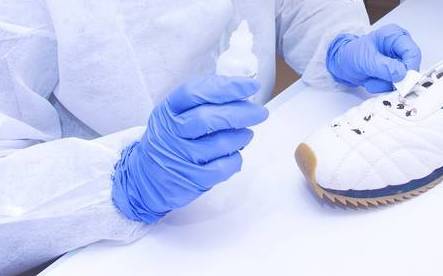
Clothing
While working in the lab, closed toed shoes with good traction are required. Closed toed shoes will protect your feet from spills and broken glass. Shoes with good traction will help prevent slips and falls. Long pants are also required so that your legs are protected. Long hair should be tied back so that it won’t drag in chemicals or catch fire if flames or bunsen burners are used. It is a good idea to avoid wearing jewelry as well. Rings can rip rubber gloves and bracelets and necklaces can catch on lab equipment.
Lab Safety Equipment
There are some types of lab equipment that help keep lab workers safe. Each type of equipment is described below.
Fume Hood - A fume hood is a special cabinet that pulls air from inside the cabinet and pushes it outside or through a filtration system. Fume hoods should be used for completing tests where chemical fumes or gases could be created.
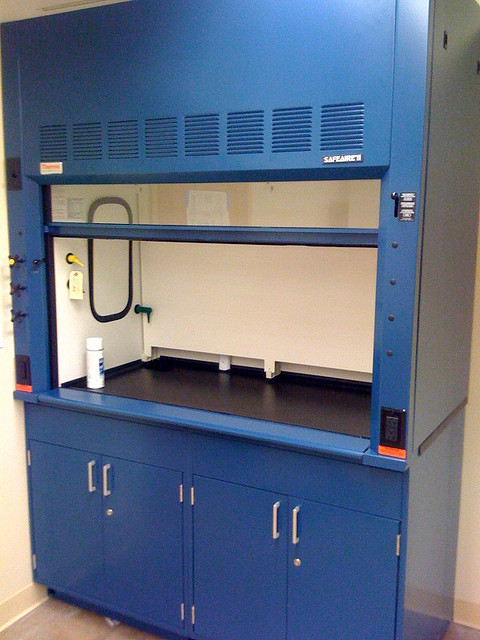
Autoclave - An autoclave is a like a pressure cooker. Autoclaves are used to sterilize lab equipment. This is especially useful for sterilizing glassware or other metal utensils that may have contacted biological samples such as blood, saliva, or other body fluids. The glassware is put on a metal tray and the tray is put into the autoclave. The autoclave has water inside. The autoclave uses very high heat and pressure to sterilize glassware and utensils. There is also water in the autoclave so that the items in the autoclave are steam cleaned.
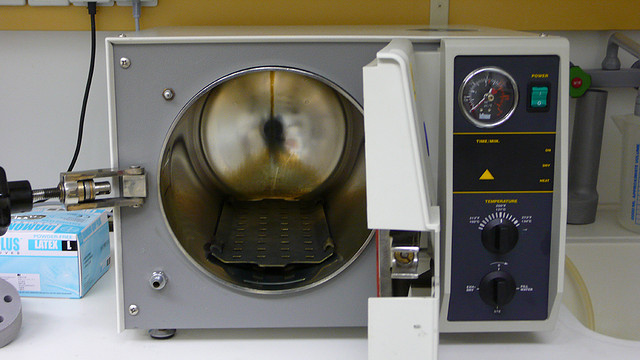
Sharps Container - A sharps container is a plastic box where used needles or other sharp objects are deposited. The container is used to keep workers from accidentally poking themselves with sharp objects that may contain contagious bacterial or viral components.
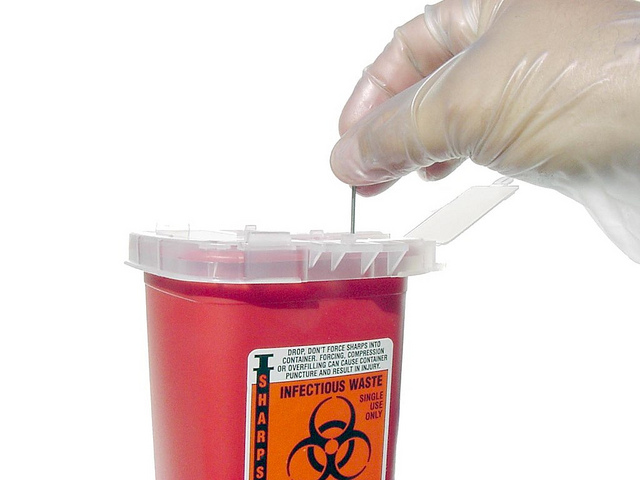
Accident Video Clip
Watch the video clip below that describes a lab accident that happened at a school.
Accidents and OSHA
Accidents
In the event of a lab accident it is important to know where safety equipment is located. Most labs will have a shower and an eyewash station. If a person becomes covered in a chemical they may need to quickly move to the emergency shower. If they have chemicals in their eyes they will need to use the eyewash station. Often if a person becomes involved in an accident they may not be able to see well enough or think fast enough to get to the shower or eyewash station. If this happens those around them may need to assist the person in getting to the shower.
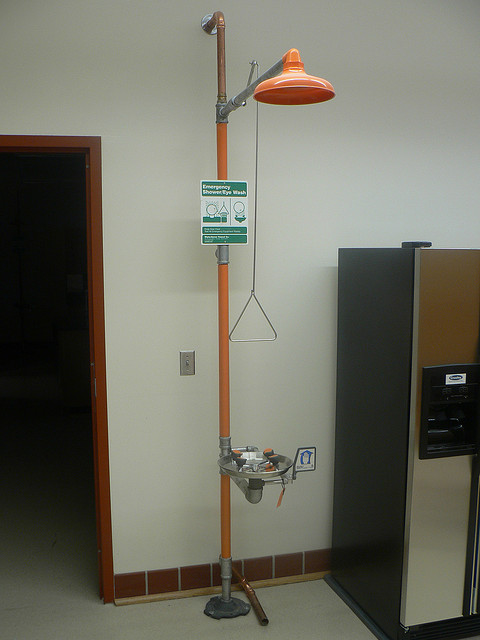
If there is a fire in the lab it is important to know where fire-extinguishers, fire blankets, or other dry extinguishing agents are. Some types of fires need to be put out with specific extinguishing agents. It is important to know about the chemicals you are working with in the lab so that proper safety procedures can be followed.
Labs should also have a first aid kit on hand so that common cuts can be taken care of. If an accident occurs and the person needs immediate medical attention someone should call 911.
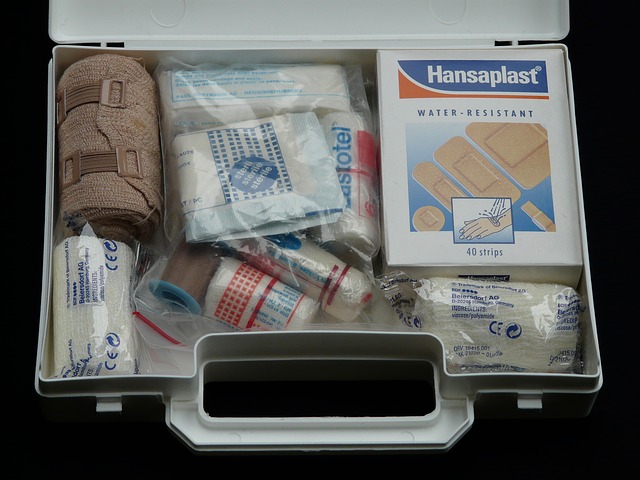
OSHA
The Occupational Safety and Health Administration protects workers in most industries by providing safety regulations and requiring that workers use protective equipment. All forensics labs must follow OSHA regulations and standards. OSHA will sometimes do inspections in labs and other work places to make sure that regulations are being followed.